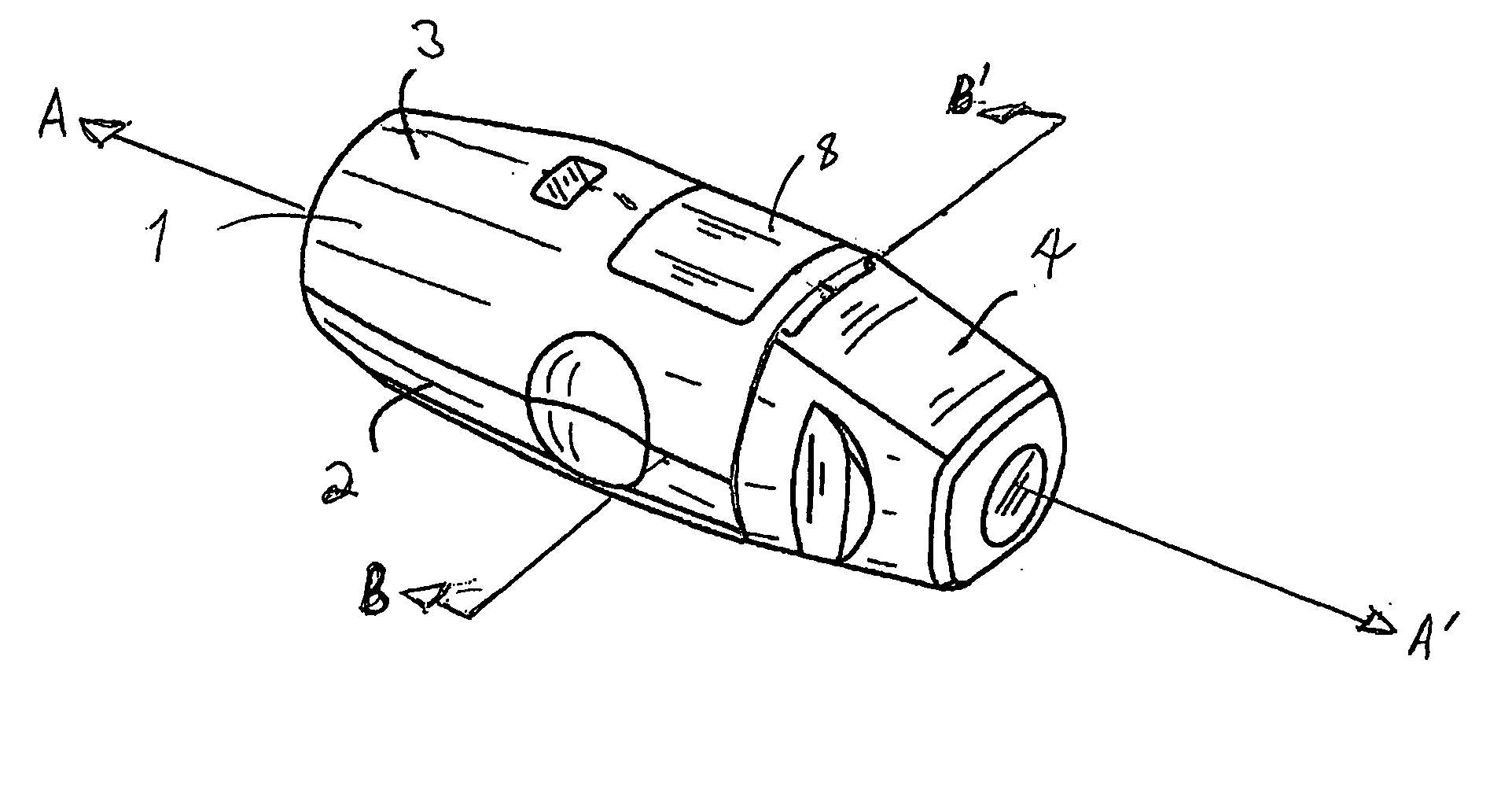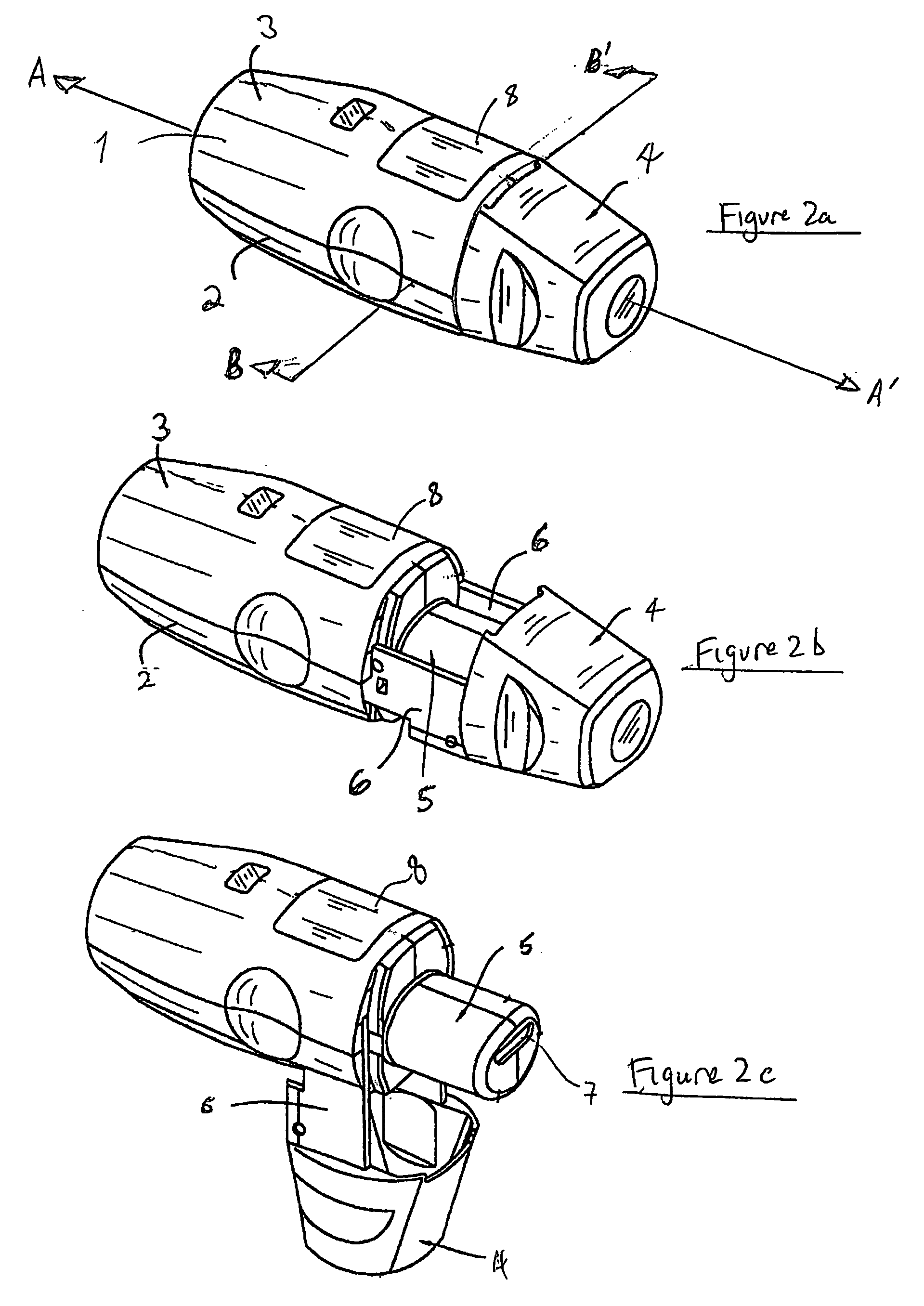Gravity-actuated locking mechanism for drug container
a technology of gravity-actuated locking mechanism and drug container, which is applied in the field of container, can solve the problems of patient receiving incorrect dose of drug, cap being opened in an inappropriate orientation, and intermittent malfunction of locking mechanism on some devices
- Summary
- Abstract
- Description
- Claims
- Application Information
AI Technical Summary
Benefits of technology
Problems solved by technology
Method used
Image
Examples
Embodiment Construction
[0014] In a first aspect of the present invention therefore there is provided a container for dispensing an active agent, which container comprises a housing containing said active agent, a cap connected to the housing and gravity-actuated locking means for locking together the housing and the cap, said cap being in an unlocked state when the container is held in a first orientation, but when tilted or rotated out of said orientation said locking means are urged by gravity into locking engagement to lock the cap; wherein said locking means comprise a first locking element that is connected to the cap and is moveable in conformity with the cap inside the housing and a second locking element that is moveable under force of gravity on a profile formed on the internal surface of the housing in response to any tilting or rotating movement of the container out of the first orientation to engage the first locking element in locking engagement; characterised in that the second locking eleme...
PUM
 Login to view more
Login to view more Abstract
Description
Claims
Application Information
 Login to view more
Login to view more - R&D Engineer
- R&D Manager
- IP Professional
- Industry Leading Data Capabilities
- Powerful AI technology
- Patent DNA Extraction
Browse by: Latest US Patents, China's latest patents, Technical Efficacy Thesaurus, Application Domain, Technology Topic.
© 2024 PatSnap. All rights reserved.Legal|Privacy policy|Modern Slavery Act Transparency Statement|Sitemap



